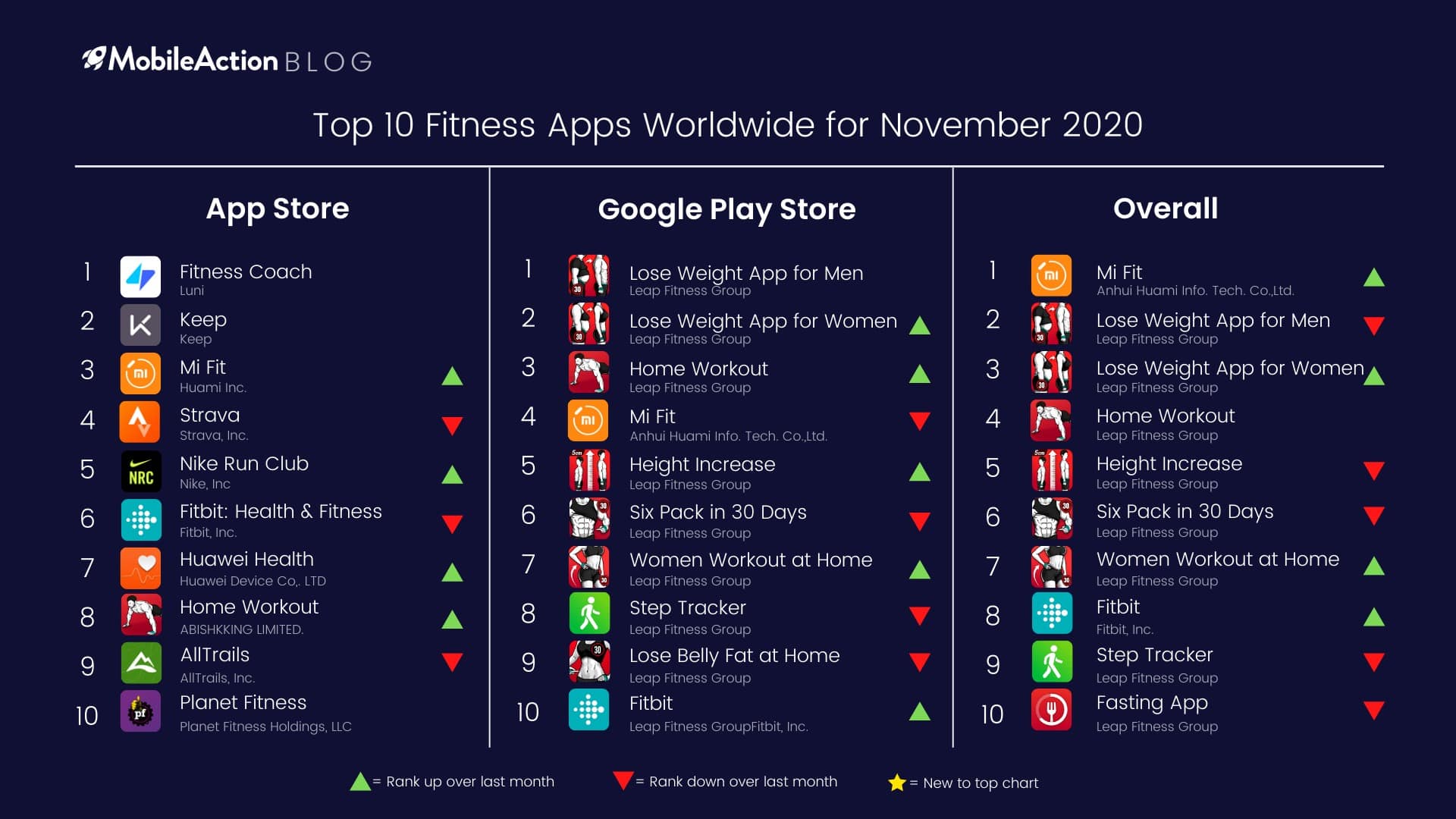This chart shows us the top 10 fitness apps around the world for this November 2020. What a year! With Gyms closed it’s no surprise that many of the fitness apps topping the charts are for at-home workouts.
The apps are sorted based on their estimated download counts for the month of November. Then, compared against last month to see if they are rising or falling in the ranks. The Leap Fitness Group is holding on to its dominance over the category. We also pointed this out in our top 10 fitness apps worldwide December 2019 article.
MiFit was the app with the most downloads overall. This app is not published by the Leap Fitness Group.
Let’s look into the ASO strategy of Leap FItness Group. Then the targeted geography behind both apps. Later on, we can check what MiFit is doing to beat out the Leap Group. We will see why it is the top fitness app in the Apple App Store and overall.
ASO Strategy
We have abbreviated some of the app names for the sake of the charts. However, Leap Fitness Group tends to have apps with wildly long app titles. Why is this?
The answer is ASO. Leap Fitness Group is also producing different apps for different segments and targets. Instead of giving different categories within one app to suit different fitness goals, it focuses on one category. Then it tries to grab all the keywords surrounding it.
It plugs these words into the metadata in the form of title, description, and subtitle to try and boost their organic growth. By doing this, they have app titles that are exact matches for as many App Store searches as possible. Those segments include keywords in their title such as “women workout” and other keywords directly related to their function. Let’s take a look at keyword Intelligence to see whether they’re successful in this strategy or not.
For an app called “Lose Weight for Men at Home” in the Apple App Store and “Lose Weight App for Men – Weight Loss in 30 Days” in the Play Store, the keyword intelligence tool shows us that their strategy seems to be working exactly according to plan.
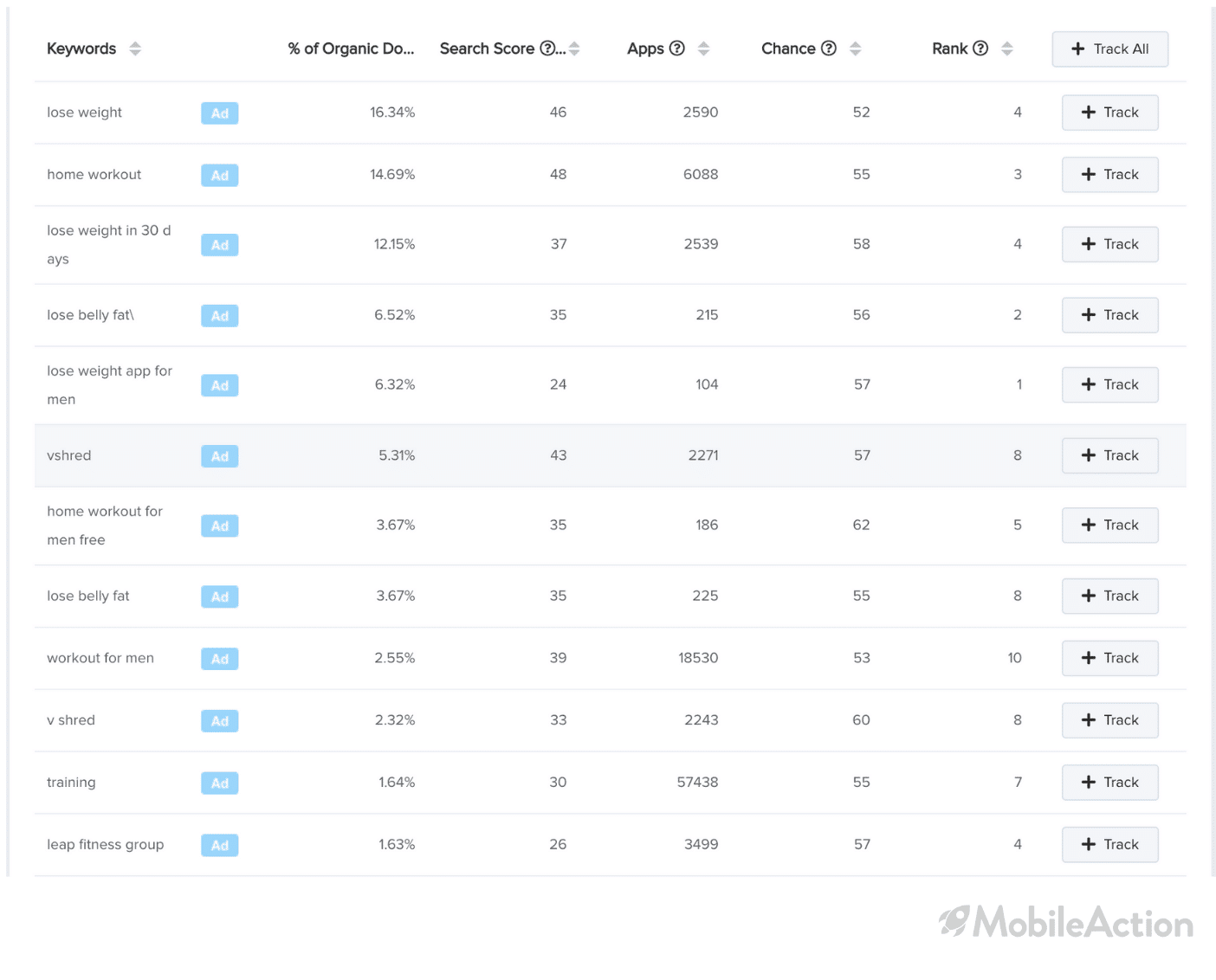
This is a huge percentage of organic downloads. These can be attributed to typing in portions of the title to the app search bar.
The above table shows us a page from the Keyword intelligence tool. The percentages are representative of the share of organic downloads that the app is getting from each keyword. Instead of going for a strong brand name, the apps by this company tend to name themselves the maximum number of popular keywords that are relevant to their application. They name their apps after their purpose. Therefore they can get organic downloads from anyone who does not have a specific app in mind. They go after people’s goals, which is a strategy that seems to work for them.
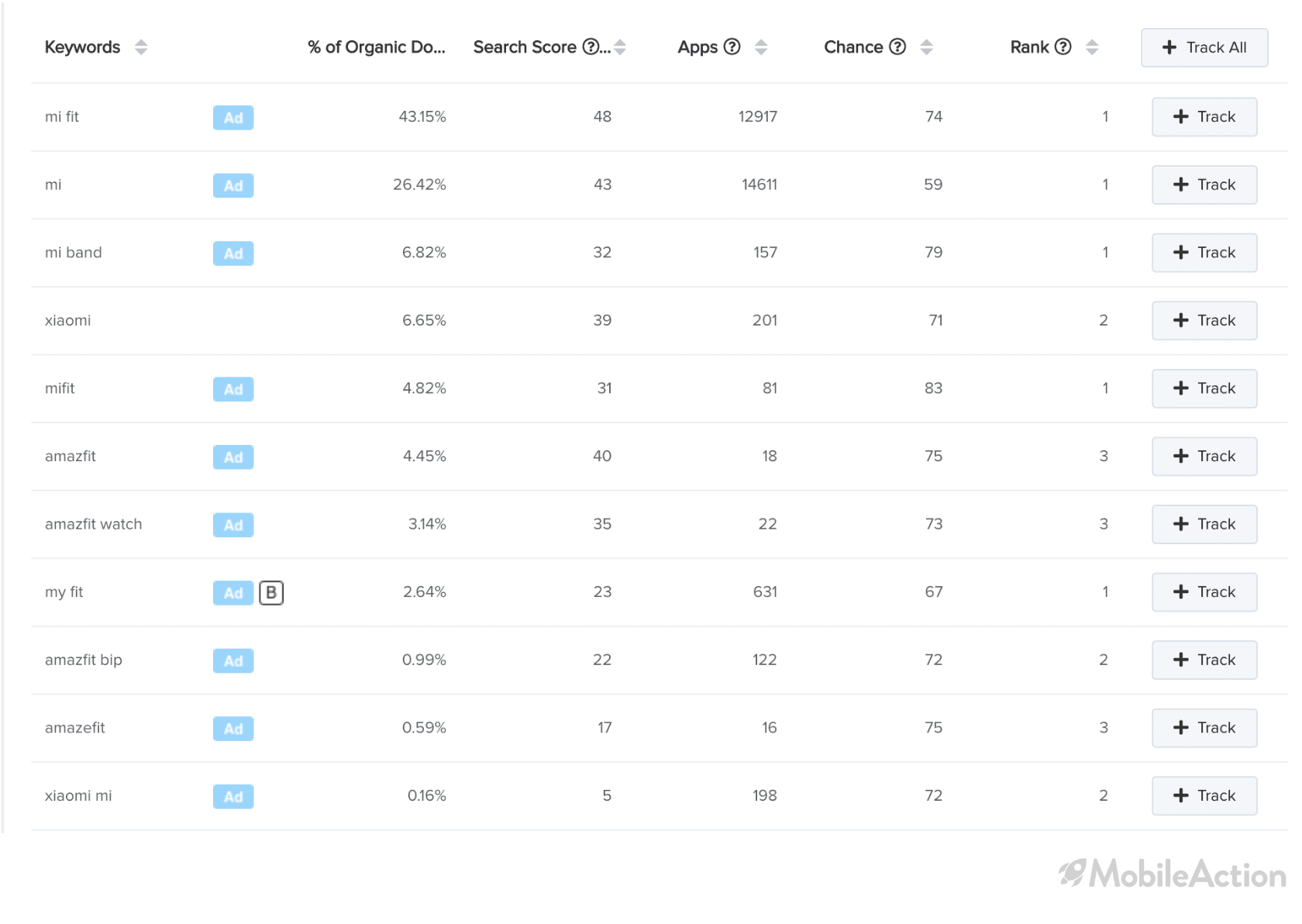
MiFit takes the opposite approach, with a short but memorable name. This app gets most of its downloads from people who know the brand and are looking for it. MiFit is a product in real life. This means the application is used as a complementary element to the fitness tracking device. This means that people know exactly what they are looking for when downloading the app.
Growth Visibility Around the World
When we compare the two apps on our Visibility Map from the Visibility Report tool, we can see, as can be predicted from the charts, that Leap Fitness Group’s top app “Lose Weight For Men” rules the Android world while MiFit Dominates iPhone users.
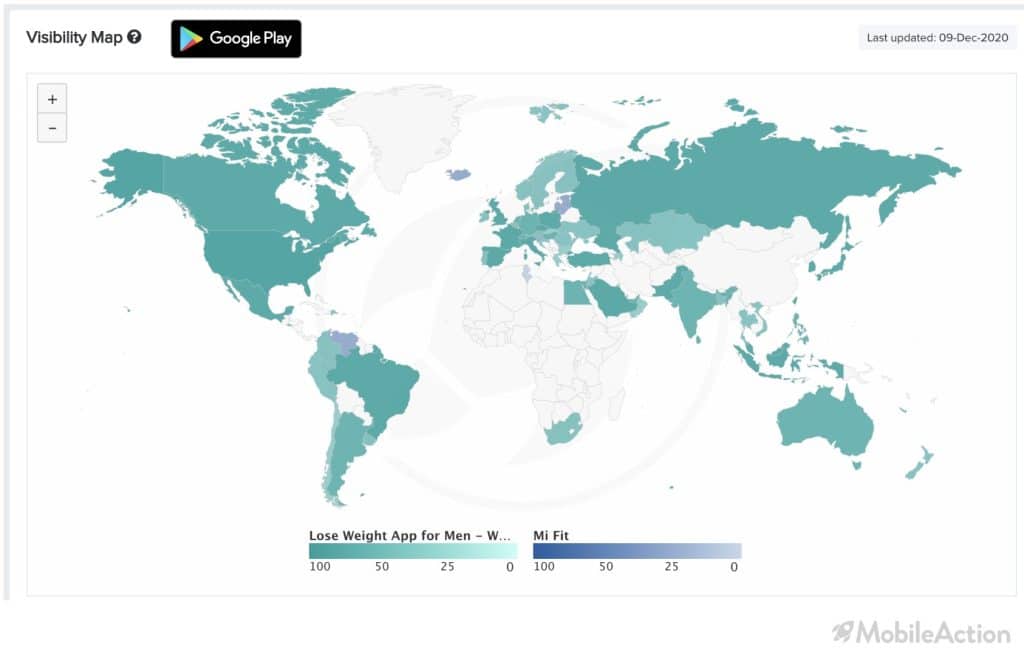
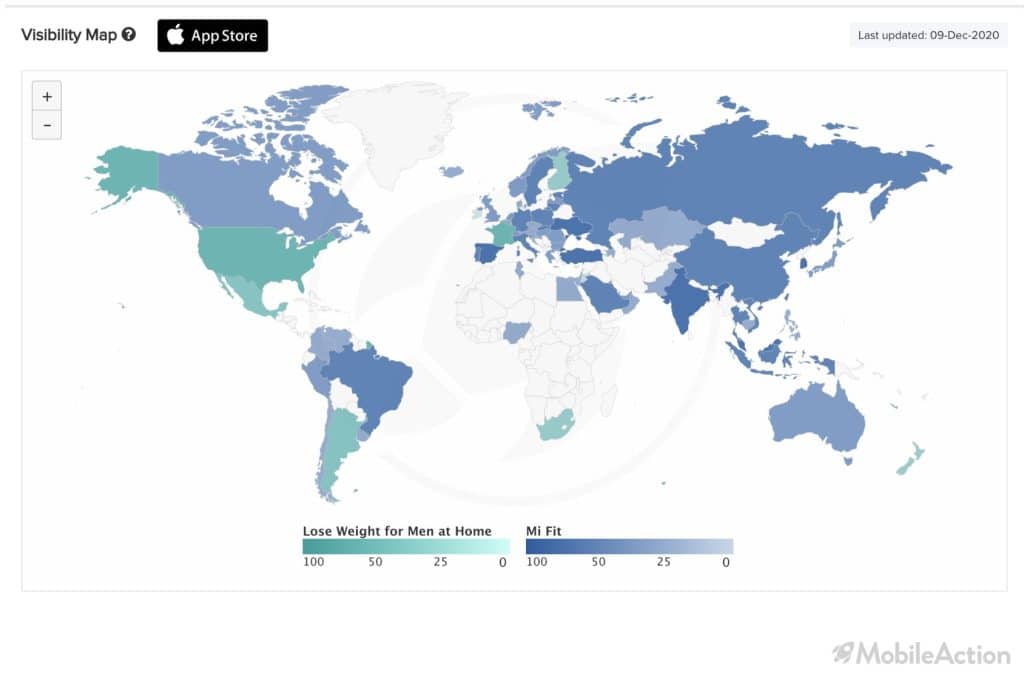
These maps are comparing the visibility between the two apps in both stores. Though MiFit is more visible globally in the App Store, Lose Weight for Men at Home does manage to hold on to the United States and a couple of other countries.
This may be because Leap Fitness Group has done more Localization for their Apple applications.
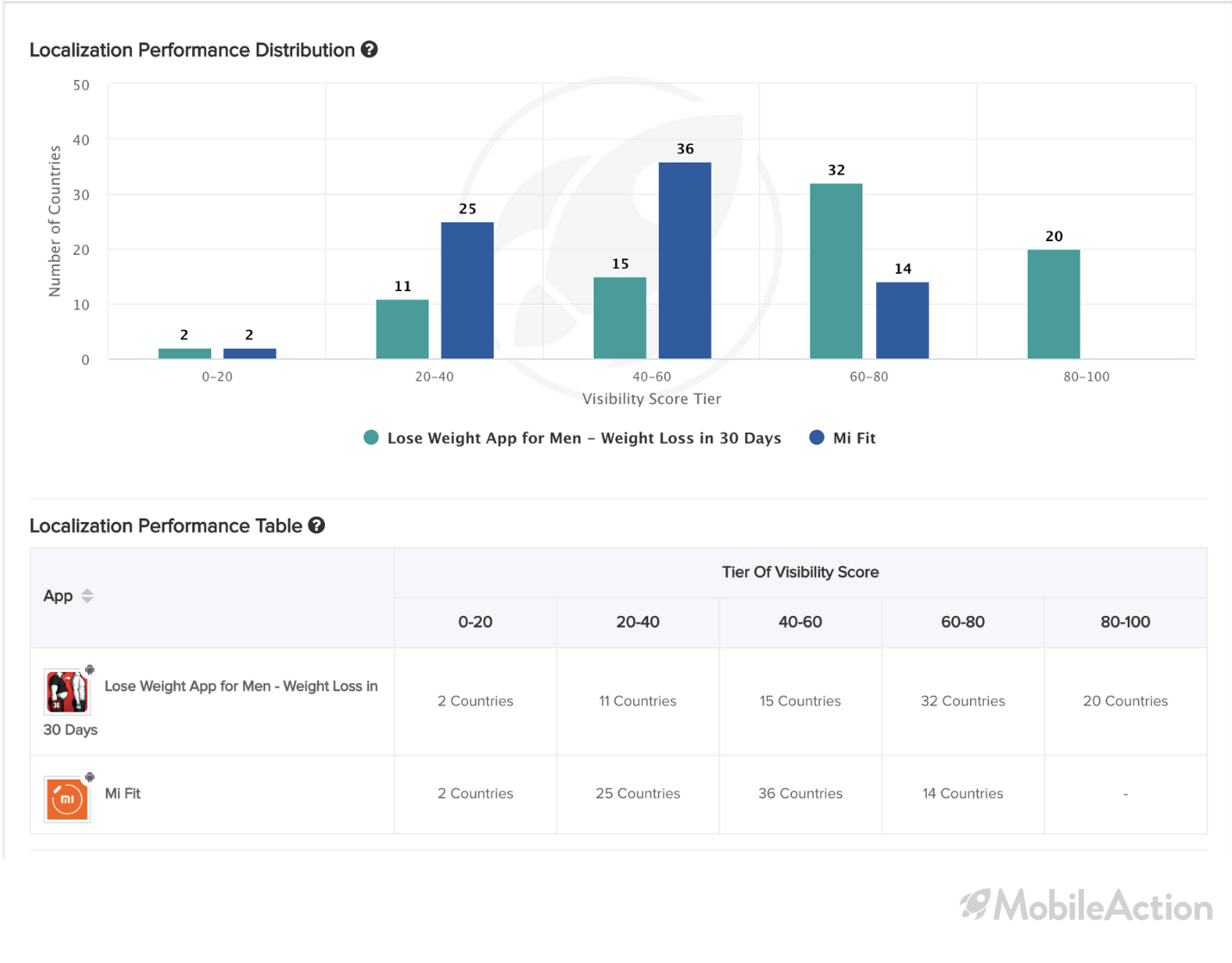
Localization makes a difference!
Even though MiFit is winning in terms of visibility, Lose Weight For Men at Home has a better localization record. Considering that they are getting so many of their downloads from organic search results this is necessary for them to achieve international success.

The Apple Store Difference
The MiFit distinction may be because of their direct competition with Fitbit. Places, where Fitbit dominates the market, may have less MiFit users. This may be because people have no need for two such similar devices.
The majority of the top fitness apps in the App sStore follow this same pattern. From the chart above, we can see that the top fitness apps in the App Store have more recognizable brand names. This means that they are more likely to be getting their organic downloads from name searches. The Android store and Leap Fitness Group specifically, is getting its downloads from people searching for something they want out of the app rather than a particular brand.
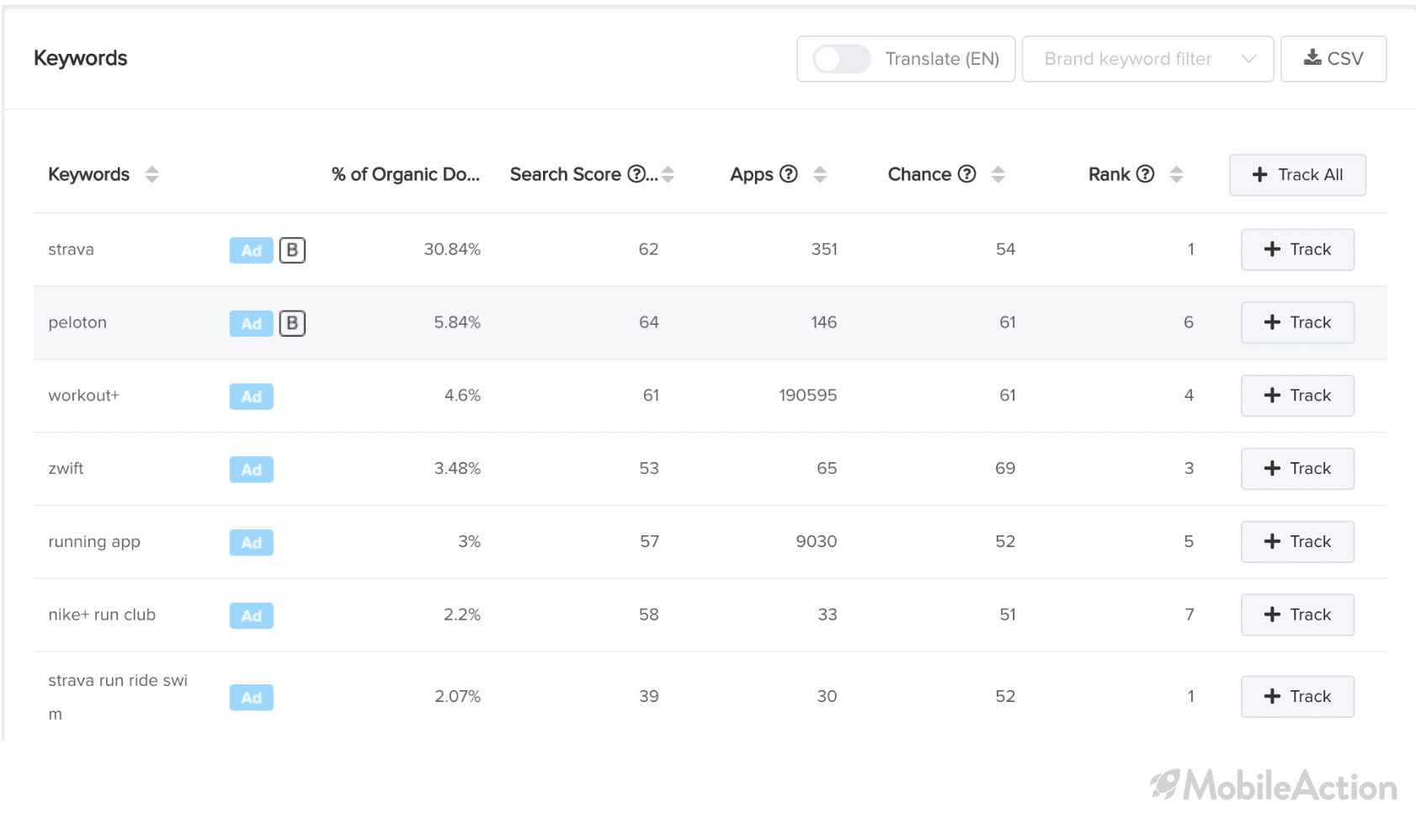
This is an example from strava. They are also ranking highest for keywords specific to their brand and their competitor’s brand names.
Recap Fitness Apps Worldwide Strategy
A major focus for this month’s chart is the apps focusing on at-home workouts. The Play Store is focusing on varying segments including women, men, height growth, or belly fat. Across both stores, Covid19 has impacted ASO strategy for fitness apps. They are targeting the keyword home which people have been searching more since the stay at home order.
With the new year approaching and New Year’s resolutions ready to set in. There will be another spike in fitness app downloads. Now is the time to prepare your app’s ASO strategy and look at what your competitors are doing. Sign up for a demo to take a look for yourself.
